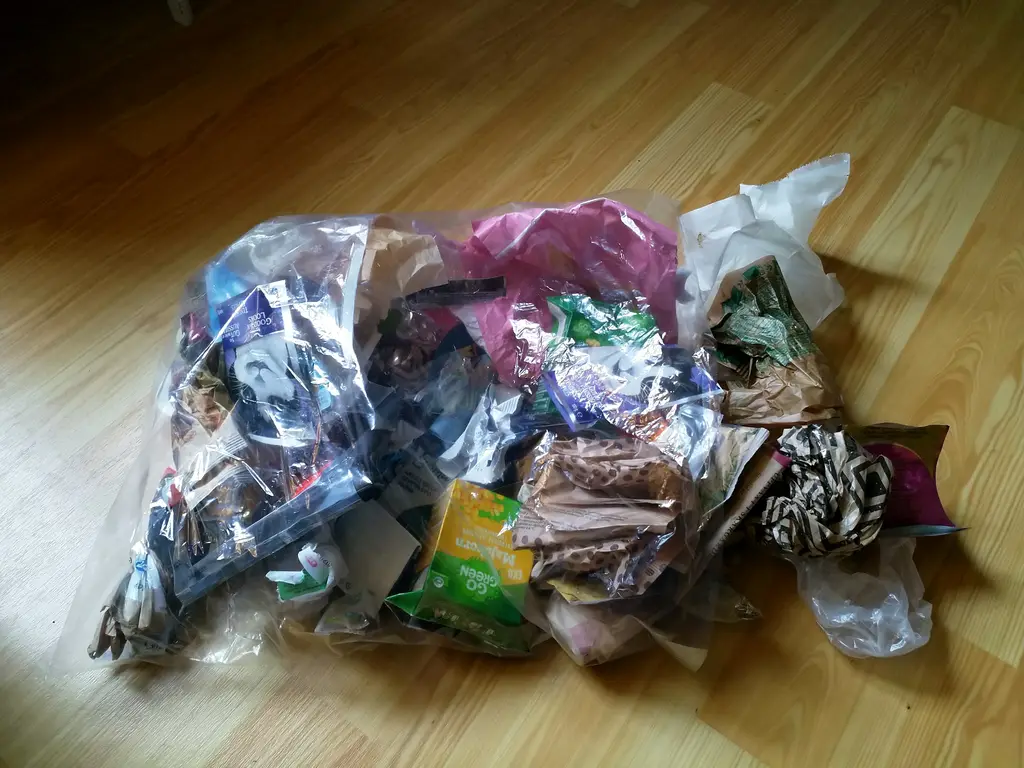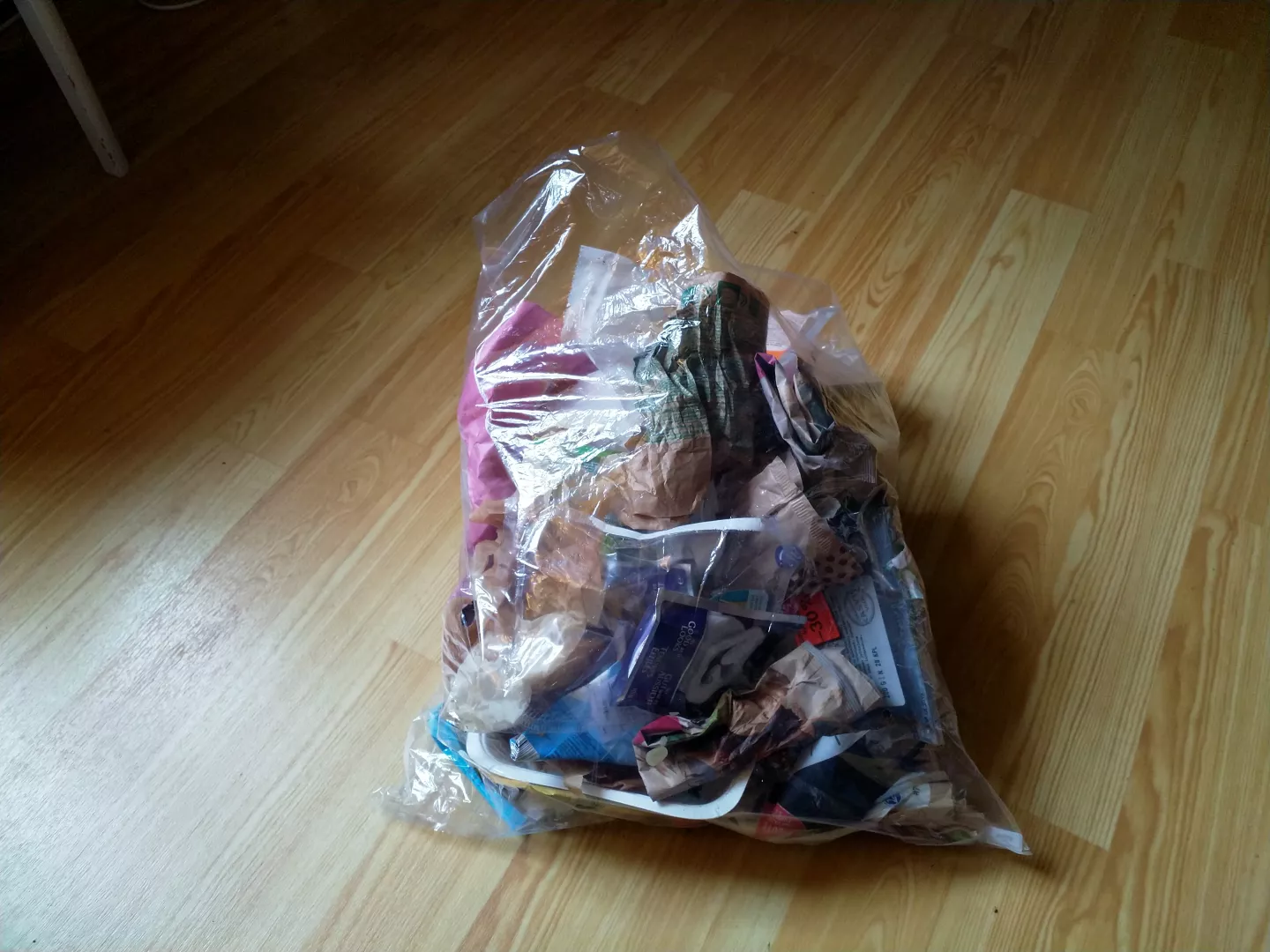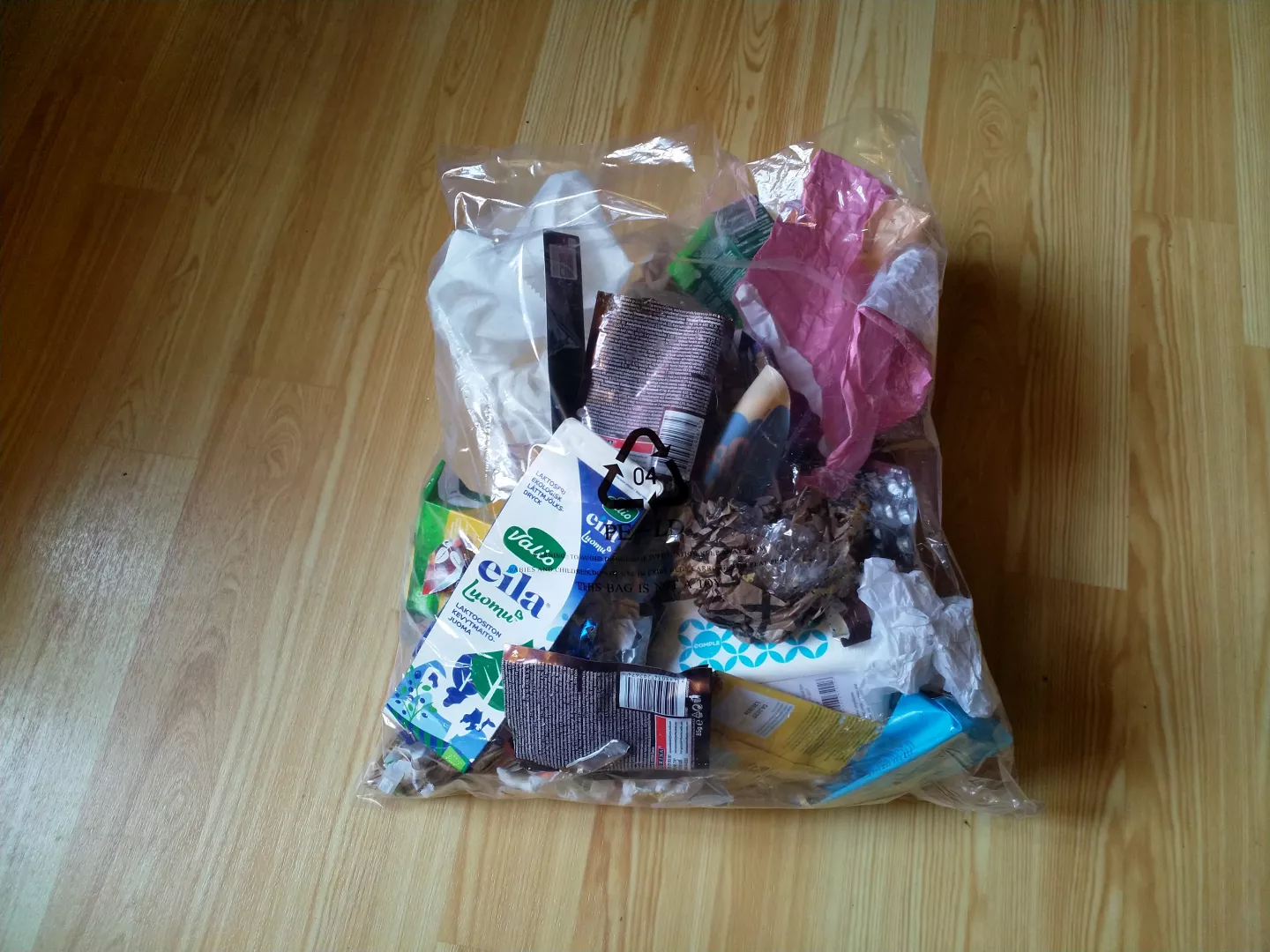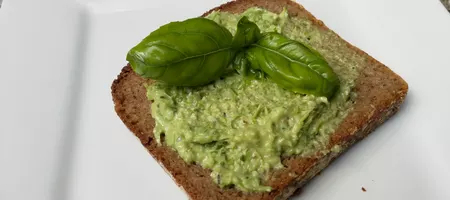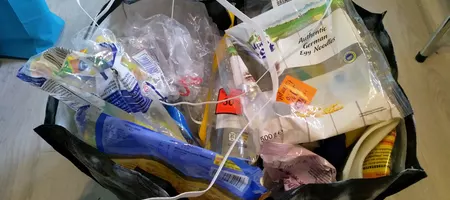In Finland September is Zero Waste challenge month. If you have never heard of the zerowaste movement, it is (Wikipedia quote) ”a set of principles focused on waste prevention that encourages the redesign of resource life cycles so that all products are reused. The goal is for no trash to be sent to landfills, incinerators, or the ocean. ... The process recommended is one similar to the way that resources are reused in nature.”
Pretty much what it says on the label, right?
We’ve been looking at our trash can lately and thinking about how to perhaps reduce waste further, so took up the challenge. This first week of September 2019 we closed the trash bin lid and collected all trash that would be sent to the incinetor in a separate trash bag. This is what I learned during this week.
1. We did not wash plastics. It is wasteful of resources to use pure water to wash plastic trash only to make it eglible for recycling in Finland. But, this week I washed some of the easier ones like fresh yoghurt containers with cold rinsing water. It took 3 seconds and no extra energy. I will do that in the future too, but the very dirty and smelly cat food bags and crusty plastics will continue to go to energy for sure. I also see our cat should try to have more mice and canned food again. 2. We do not recycle cardboard. Most of it we use to start the fire in our three ovens, but some food containers are suspicious to me for that use. What surprised me the most is that milk cartons with plastic caps can be recycled as cardboard. Not that we use these regularly (this was for an event, where organic, lactose-free milk was necessary), but it did surprise me. The cardboard recycling bin is next to the plastic recycling 11 kilometres from our house, next to the supermarket, so basically it would be possible to recycle that also. I will try that this month. 3. Mixed materials are from the devil himself. Where to put a bag with paper and plastic? Is baking paper just paper or not? I do not know, but I plan to find out. 4. Keepin’ it real: this is not all trash we tossed this week. The recycleables are also trash, but I am talking about old trash/stuff/materials from the house (that previous owners created and we are now slowly clearing out). At least two big black 150 litre sacks of that stuff left the house this week. I also admit to copout emptying of the bathroom trash into the main bin as guests were almost here and it was spilling over. I could have recycled a lot from it.
The Finns love recycling. A lot of zero waste people love recycling. Someone even said recently on Instagram that she buys yoghurt in plastic containers, but that is OK because the plastic will be recycled after she washes her crusty, dried-out containers (with warm, fresh water I assume). But it’s just not that simple as people like to make it to be. And: there is a limit to how often plastic can be recycled. There is a reason why recycled plastic is used to build park benches and potting containers.
"Choosing your plate"
I see this over and over, in zero waste, in permaculture, in eco-lifestyle. People ”choose their plate”, make an idea easy enough to follow and choose to ignore everything outside the plate’s perimeter.
Take zero waste. Making trash = bad, but making recyclable trash = good. Having someone else make trash for you (like leaving the packaging at the store or going to a restaurant for dinner) = good, but making trash at home = bad. Buying new glass jars = good, but using your old plastic containers = bad. Sure this is very edgily said, but these are sentiments and attitudes I see over and over again.
Same in permaculture: I've seen fancy farms that have best selling books and whose pratices are copied all over the world even though have little to do with things like small and slow solutions, closed loop systems or cradle to cradle in many of their practices. Their instagrammy image might be oh so pretty, sure, and then just fleeingly it is mentioned somewhere that to propagate seedlings like they do you need special stuff from Asia and commercially produced (who knows where) growing base materials. These farms use tractors (that use gasoline and oil) like everyone else, but somehow the permie image wooshes the facts away from their fans minds. They choose their plate (”if we call it permaculture and use some of its principles, it will make good of everything we cannot make sustainable or regenerative”) and feed their fans from it - and they like it. Often no questions asked.
Or take the eco lifestyle. I have met and read from so many people who are doing their best to live sustainably – and one thing most have in common is that they live in cities partly because they do not want to drive a car. Their plate is: own or drive car = bad, no car = good.
Context is King
What they forget is to observe their situation and the situation of others. We own a car. Did I mention, we live 11 km from the next grocery store? We have 2 hectares of forest around us binding carbon as we speak. We live in a 70-year old log house. Would we be better off in a city, in an apartment building built with virgin concrete and non-recycleable, virgin materials for insulation plus air management that works only with electricity? For every solution one chooses, context is key. Simply copying or following a leader is not sufficient.
Or: is car sharing with a stranger better than me and Nick sharing our own car to visit different places in town? Just because the stranger owns the car and not you, it doesn’t make the emissions zero. In some cases, not owning a car is just another way to outsource your impact and waste.
Sometimes these dogmas make your life easier, but sometimes you close your eyes for truly creative, out-of-the-box, regenerative solutions.
I am not saying it is wrong to think inside your own little plate in our chaotic, confusing world, and it is often better than nothing, but it would be honest to open ones eyes and at least aqknowledge that there is something outside the plate one has chosen for themselves.
Observe, Observe, and Think for Yourself
One of the main design processes of permaculture is the OBREDIM. It starts with O – observe. I am not much of a designer, but I can observe and see patterns easily. This is what I have observed inspired by this week. You can not just buy into some dogma, technique or rule and copy it into your life without first observing if it will fit your big picture. Or you can, but just know and admit it is not the whole truth and push your 6-months-in-a-glass-jar-trash to everyones faces, basking in your own glory partly because you have oursourced your trash to somewhere else.
This may seem harsh, and it is, and I am very much not perfect in seeing the whole picture either. What I do try to do is to keep it real. That’s why you see our trash here, even if it's way more I would like it to be.
For the next three weeks I will be looking at our recycleables. Just beacuse you put a plastic container in the recycling bin, its impact has not been offset. It recovers an amount of it back, using up more energy in the process. It’s better than nothing and hundred times better than a landfill, but recycling alone is not the solution. Especially in Finland, where all trash is burned for energy.
In Zero waste I can so clearly see it has its origins in the US, where (in many states and towns) recycling is so awfully bad us Europeans would not believe it. Even glass, food waste and metal could go to the dump. Ever walked the streets of New York after dark? The amount of trash is crazy! But my point is: Finnish (and many more places also, I am sure) zero wasters shouldn’t just take the American model and copy it into their own lives as-is. It simply does not make sense.
So my next step is to look at our recycleable trash for this month. Let’s see how it goes.

